Abstract
Steady state effluxes of potassium and sodium ions were measured on Pisum sativum var. Alaska root segments excised from seedlings which had grown in a nutrient solution containing the major inorganic ions and either 86Rb as a tracer for K or 22Na as a tracer for Na. Fluxes appeared to be from 2 cellular compartments, a small compartment with a high flux rate and a larger compartment with a slow flux rate. Cell wall exchange fluxes are believed to have been negligible. Efflux rates for 11.3% and 88.7% of cellular potassium ions were 6 × 10−7 and 1.32 × 10−7 respectively; rates for 33.7% and 66.3% of cellular sodium ions were 1.48 × 10−7 and 3.83 × 10−8 respectively, (equivalents per gram fr wt per hr). The sodium flux measurements, with previous measurements of ionic concentrations and transmembrane potentials, support the theory that sodium is transported actively from Pisum roots.
Full text
PDF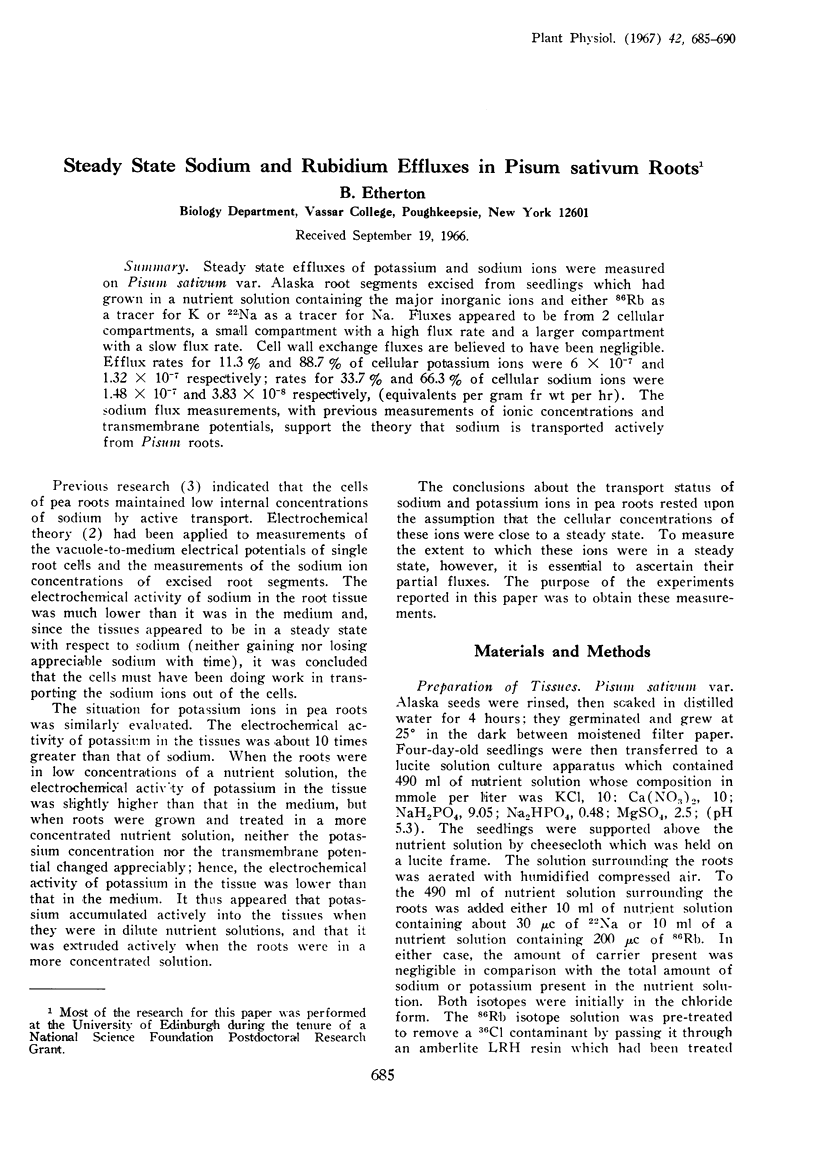
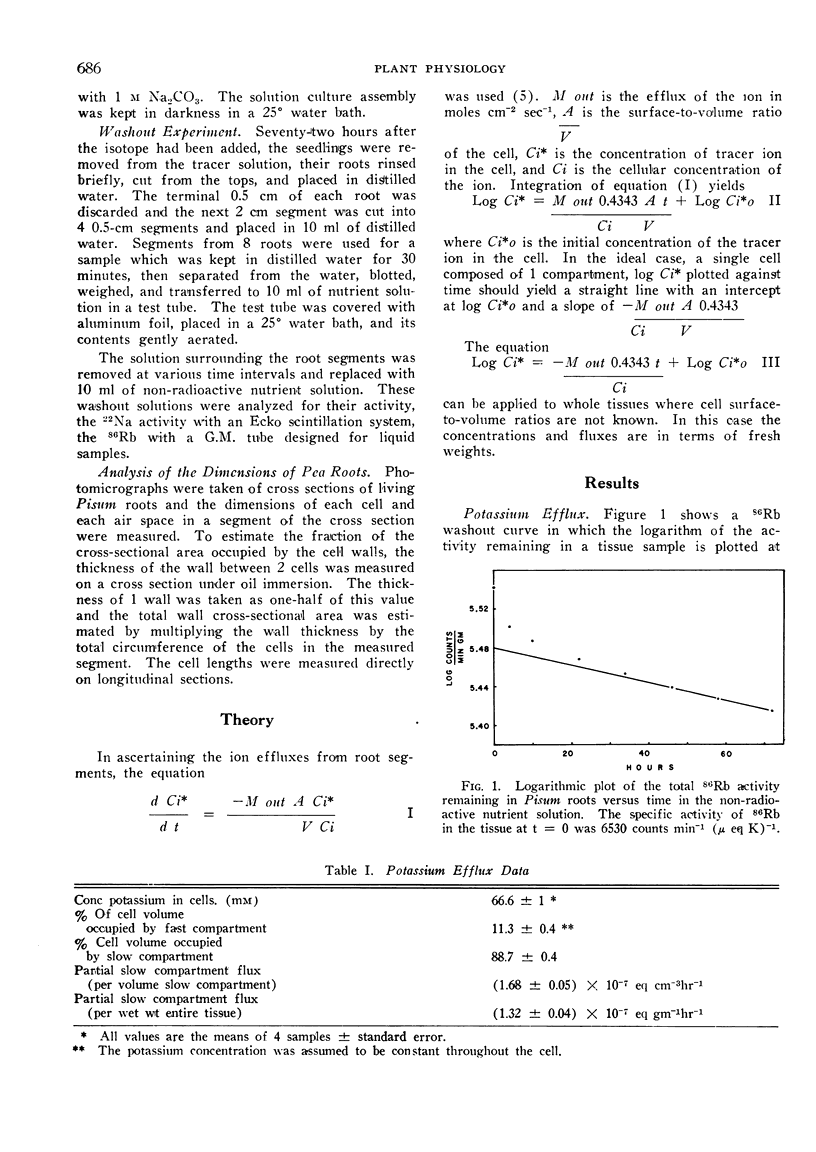
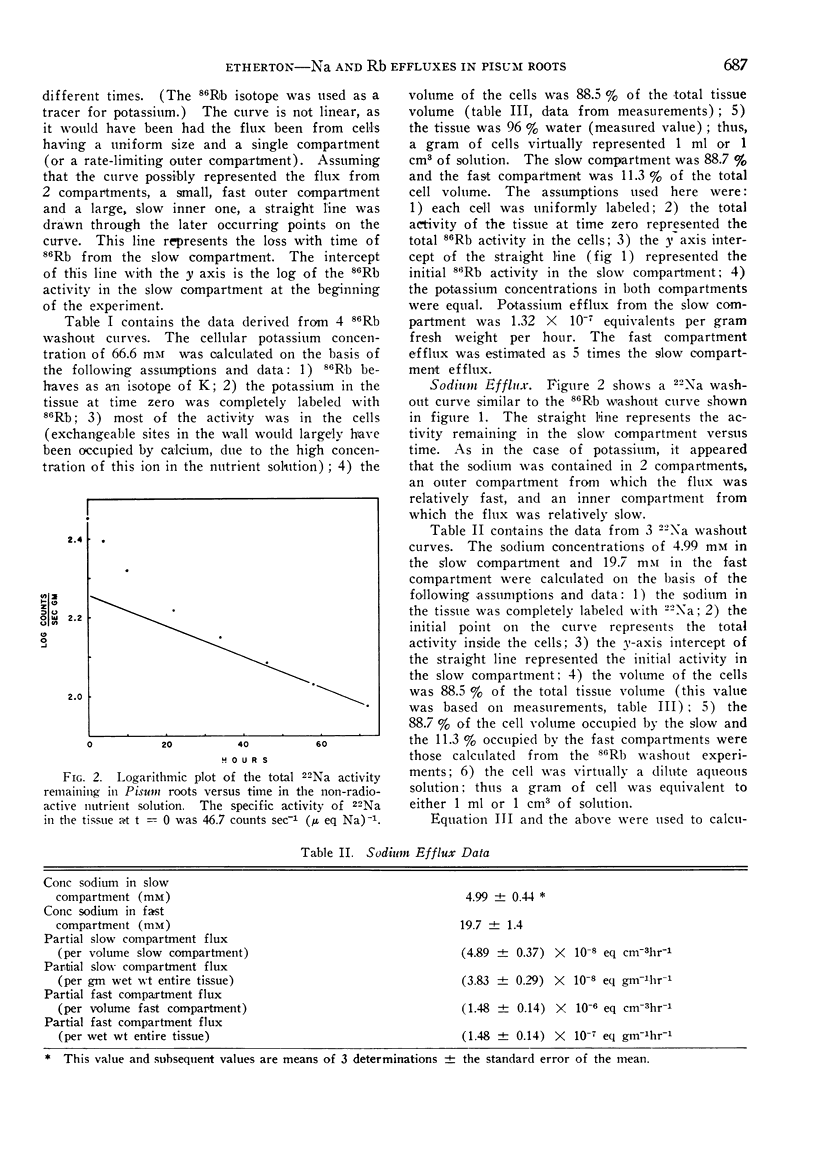
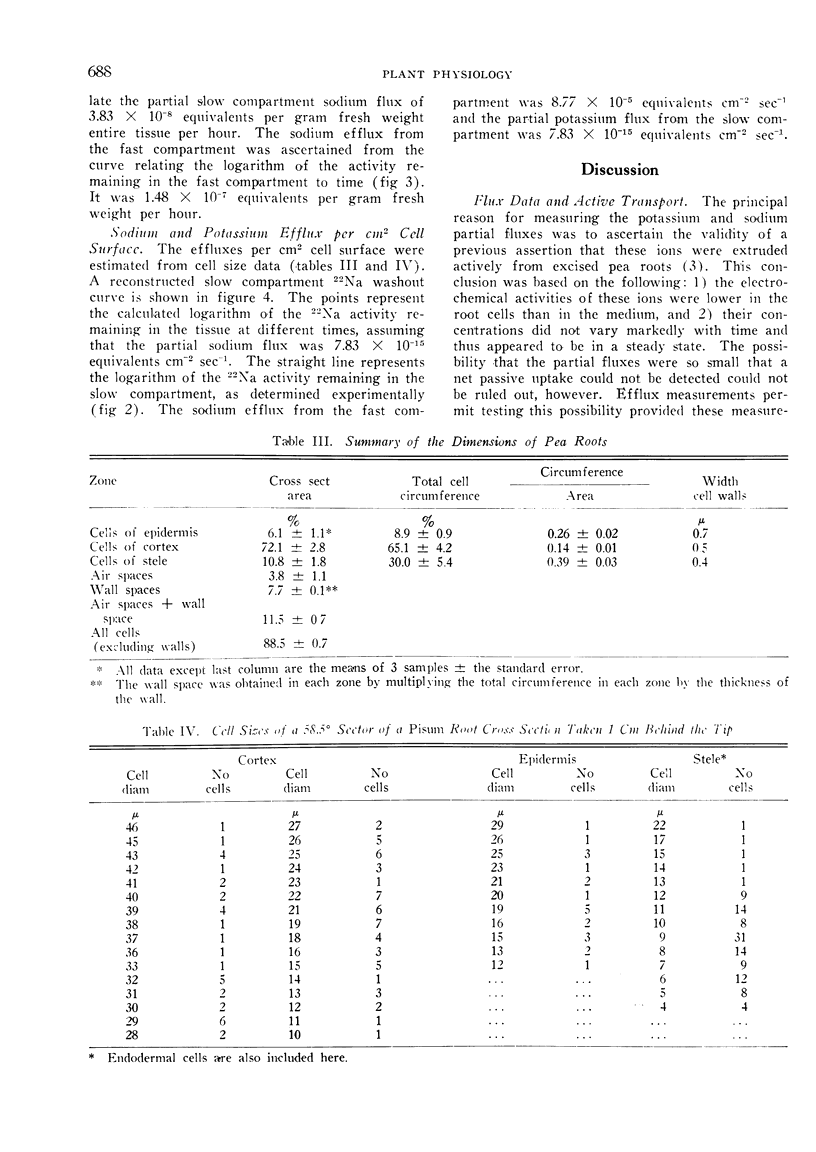
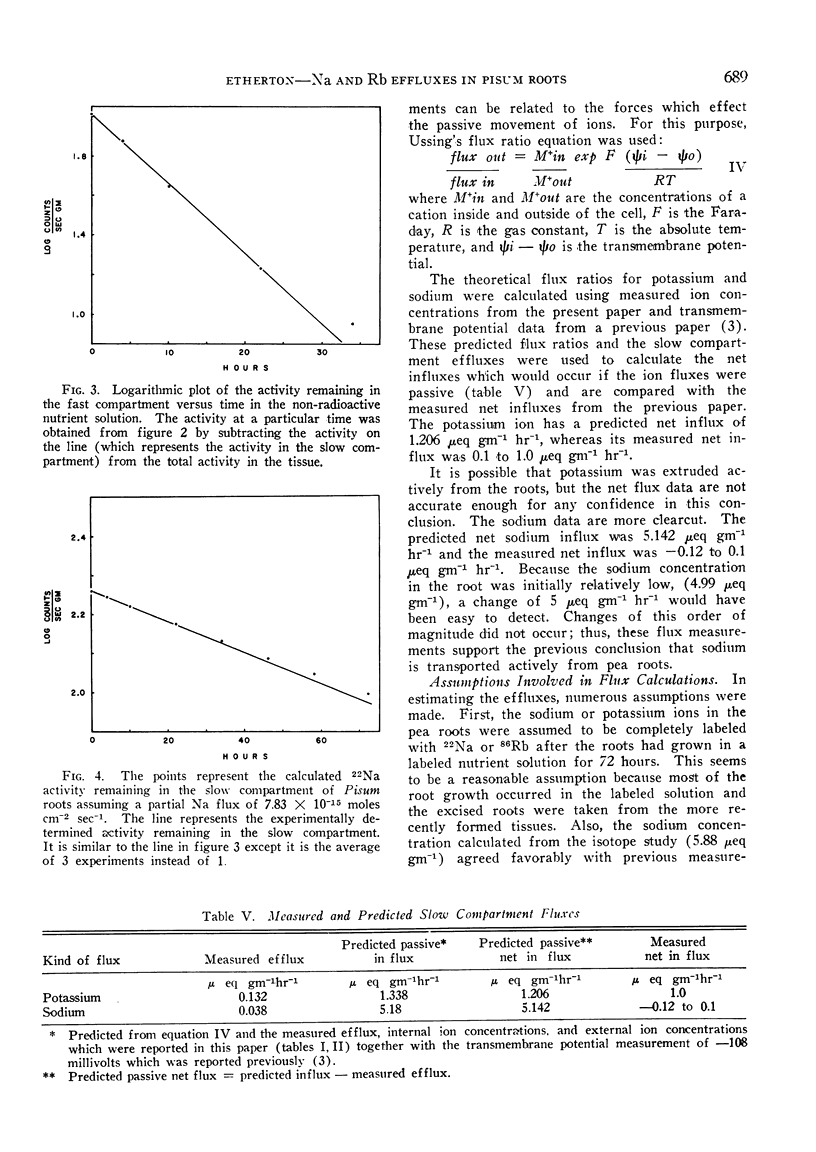
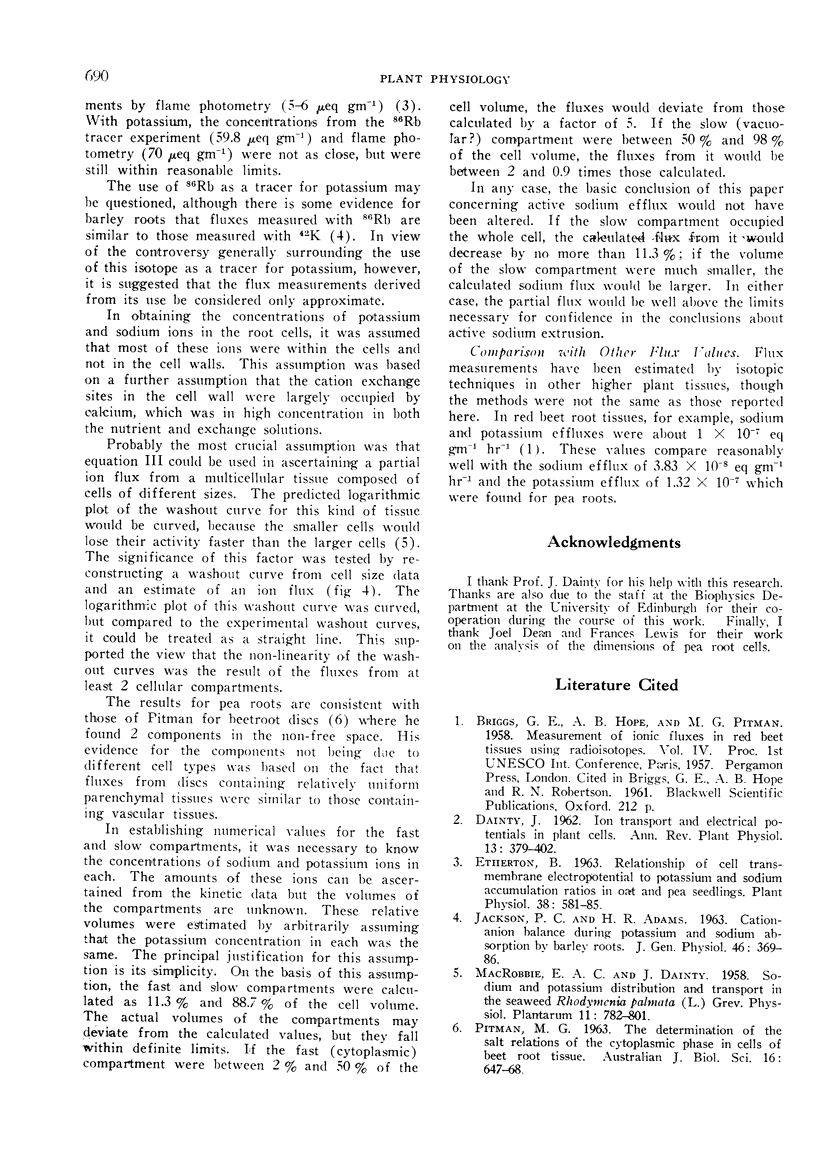
Selected References
These references are in PubMed. This may not be the complete list of references from this article.
- Etherton B. Relationship of Cell Transmembrane Electropotential to Potassium and Sodium Accumulation Ratios in Oat and Pea Seedlings. Plant Physiol. 1963 Sep;38(5):581–585. doi: 10.1104/pp.38.5.581. [DOI] [PMC free article] [PubMed] [Google Scholar]
- JACKSON P. C., ADAMS H. R. Cation-anion balance during potassium and sodium absorption by barley roots. J Gen Physiol. 1963 Jan;46:369–386. doi: 10.1085/jgp.46.3.369. [DOI] [PMC free article] [PubMed] [Google Scholar]


